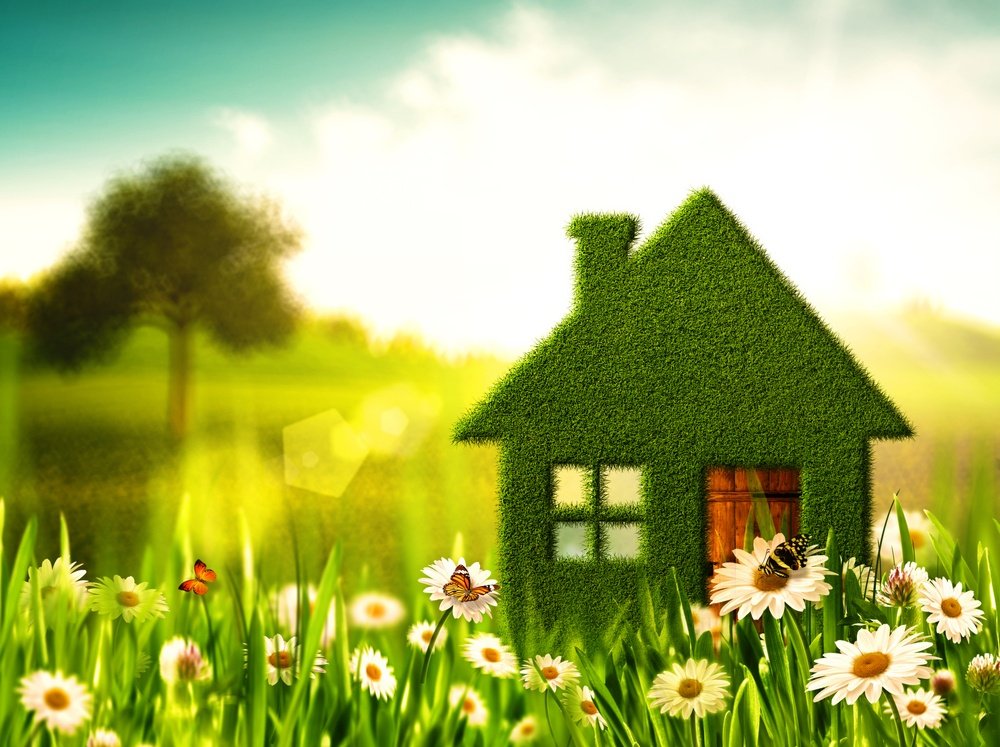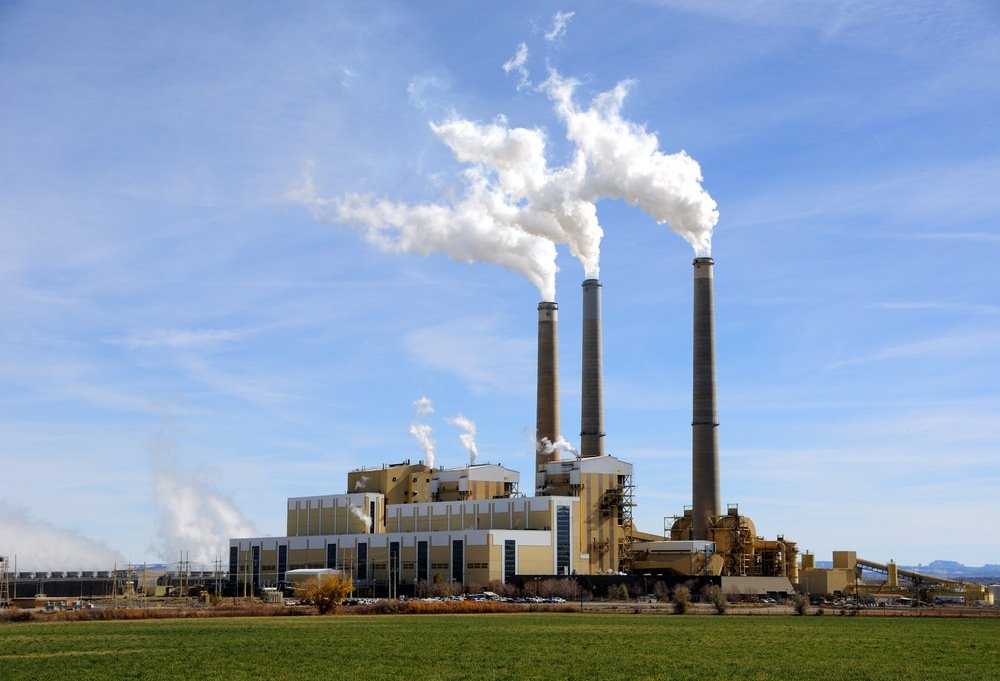How Energy Efficient Homes Impact The Environment

For some people, going green is an economic proposition. It’s about reducing energy bills and saving money long term, and little else. But many of us want energy efficient homes for another reason: the environment.
Despite what some naysayers claim, climate change is definitely happening. And sadly, the use of renewable energy wouldn’t be enough at this point to reverse its ill effects. Combating climate change requires a multipronged strategy, and energy efficiency plays a crucial role in that. We’ll need to apply energy efficiency to agriculture, industry, and commerce… and energy efficient homes will play a bigger role than you might realize.
According to the Environmental Protection Agency (EPA), buildings make up approximately 39 percent of total energy consumption and 68 percent of total electricity consumption. They also produce about 38 percent of nationwide carbon dioxide emissions.
To put that into context, transportation accounts for about 28 percent of total greenhouse gas emissions. So when it comes to curbing climate change and protecting our environment in general, energy efficiency and energy efficient homes are nothing short of vital.
We should all do our part to reign in greenhouse gas emissions. But the fact that doing so provides a wealth of benefits outside of protecting the environment should quell the ever-shrinking swath of the populace who refute climate change. There’s simply no denying that living in energy efficient homes is not only healthier for our bodies but healthier for our bank accounts as well.
Energy Saving Techniques
Establishing an energy efficient home might seem like a daunting task, but in reality, there’s a lot you can do to save energy and reduce your carbon footprint. Making even small improvements in energy efficiency over time, when you’re able to do them, will go a long way toward helping the environment. And you get the added perk of saving a considerable amount of money long term as well, making energy efficiency a genuine win-win.
Here are a few examples of energy efficiency techniques that can go a long way toward reducing your utility bills and saving the environment:
- Upgrading lighting is perhaps the easiest, lowest-cost efficiency practice you can implement, in part because it doesn’t require tremendous investments or hiring contractors. The use of light emitting diode (LED) or compact fluorescent light (CFL) bulbs will make a noticeable dent in your home’s energy consumption.
- Buy energy efficient appliances like refrigerators, stoves, televisions, washers, and dryers, etc. These types of appliances are highly prevalent on the market today; it’s probably safe to say buying an energy efficient appliance is easier than finding an inefficient one.
- Upgrading your home’s heating is perhaps the most expensive step, but also the most effective. Insulating your home to Department of Energy standards, installing efficient heating and cooling systems, renovating your windows, and enhancing water heating with a modern hot water heater will make significant improvements.

Environmental Impact
We know already that living in energy efficient homes can save us money. But what sort of impact on the environment does an efficient home have? The short answer: a big one.
Just look at LED lighting versus older incandescent lighting. LED bulbs typically use only 10 percent as much energy as a traditional bulb, while also lasting on average about 25 times longer.
For you personally, that means you’re saving on your electric bill and not buying as many light bulbs. For the environment, however, it means less energy needs to be generated to light your home. Fewer toxic materials, like mercury, need to be mined. You’re throwing out fewer items. And the more homes that adopt these bulbs, the bigger our collective impact becomes.
An efficient heating system, ventilation system, and air conditioning system coupled with sufficient insulation will reduce your use of fossil fuels, too. Despite what some of their marketing and lobbying wings would have you believe, coal, oil, and gas are filthy energy sources that pump greenhouse gasses into our atmosphere. Proper home weatherization means you’ll need less energy to stay warm or cool.
These steps provide environmental benefits beyond fighting climate change, too. Traditional power plants are rather infamous for their air and water pollutants. Oil extraction and coal mining have made their respective strides toward being less harmful to the environment as well, though they’ll never truly be “clean” energy sources.
The environmental benefits of efficient buildings don’t stop there. According to the EPA, energy efficient homes also play a significant role in safeguarding local and regional ecosystems and their biodiversity.
Environmental, Economic, and Social Benefits
No one wants their kids breathing in toxic gas or consuming tainted or even toxic water. Likewise, you’d struggle to find many people who think strip mines and oil rigs look (or smell) fantastic. The health and aesthetic benefits of a greener planet are indisputable, and living in energy efficient homes helps us achieve that in big ways.
The EPA says the benefits of energy efficient homes are as numerous as they are critical. And they go well beyond protecting our environment with cleaner, safer air and water, reduced waste streams, and the conservation and restoration of natural resources.
Energy efficient homes are also more comfortable to live in year round. They’re warmer in the winter and cooler in the summer. And proper insulation also has the added benefit of reducing noise pollution—unwanted noise from outside your home interrupting your movie night. That’s not fun for anyone, is it?
The health benefits are pretty obvious as well. Fresh air, reduced moldy air and moisture, clean water, air sealing… it all adds up to reduced exposure to toxicity, bacteria, and germs. And who wouldn’t want to minimize their chances of getting sick?
Economically, these high-efficiency practices offer benefits far surpassing that of reduced energy costs and utility bills, too. Studies show that the occupants of energy efficient homes have higher productivity than those who do not, while the homes themselves place less strain on local infrastructure. All of these quality-of-life benefits are pretty significant.
As more consumers transition toward energy efficiency, the markets are incentivized to place more emphasis on green energy products and services.
The Energy Efficient Homes of the Future
Given all the environmental, financial, and quality of life benefits reaped from living in energy efficient homes, it should come as no surprise that efficient living is rapidly on the rise.
A REALTOR.com survey from April 2018 showed that as many as 36 percent of all homes in America’s greenest cities feature at least one energy efficient amenity. These include things like solar panels, programmable thermostats, or bamboo floors. They also found that eco-friendly homes don’t necessarily cost more than homes lacking green features.
A McGraw Hill Construction study conducted in 2014 found that nearly every new home built today incorporates some form of energy efficiency. An impressive 84 percent of new homes feature green technology and efficient amenities. Their study also found that 65 percent of those polled currently use renewables in at least some of their home renovation or construction projects.
Some of the most advanced homes can even achieve, or at least approach, net-zero energy through the use of solar panel energy systems, passive solar heating, and even windmills. A home with net-zero energy doesn’t require any energy from its local grid, supplying all of its own electricity.
It’s easy to imagine a future where every home is green, and a more distant one where every home has net-zero energy. Efficient construction and weatherization techniques, energy efficient home appliances, and localized energy sourcing are becoming so popular that it seems like an inevitability. And each of us who modernizes our homes with efficient practices helps nudge that needle a little closer toward that goal.
Want to Find Out If and How You’re Wasting Energy?
Just how green is your home today? How effective are the energy efficiency and conservation practices you’ve set in place? Is your home wasting energy? If so, how much?
The Benefyd mobile app helps you do a DIY energy audit of your home. In just a few minutes, you’ll generate a comprehensive evaluation of your home’s current energy use and get detailed hints and tips to help make your home more efficient.
Benefyd also connects you with experienced local contractors and energy advisors who can handle renovations big and small. It helps you find local rebates that can make this environmentally-conscious and fiscally-rewarding investment a little bit easier on your wallet, too.
We’re still a long ways off from that picturesque future where every home in America is energy efficient or uses net zero energy. But any steps you take toward moving your own home in the right direction helps all of us get there eventually. And apart from your high utility bills, what have you got to lose?


